Advertising teams face constant pressure to manage multiple ad platforms, keep ad spend under control, and report on tangible business outcomes, not just traffic or views. Without the right setup, it becomes harder to connect marketing actions to what actually drives results.
The best advertising management tools help you organize campaigns, track conversions, assign accurate attribution, and test multiple ad creatives with better context. Teams get more control over advertising campaigns while minimizing guesswork around which channels are delivering value.
Linking an ad platform with a purpose-built call-tracking partner is critical. An advanced call tracking software, such as AvidTrak, captures every phone conversation that web analytics overlooks. Backed by transparent pricing, responsive support, and deep expertise in complex attribution, AvidTrak logs each call, ties it to the exact campaign, and syncs the outcome directly into the CRM, closing the visibility gap and revealing the full return on ad spend that a standalone ad management tool cannot deliver.
This blog explores the 10 best advertising management tools that support better campaign planning, lead routing, and transparent performance reporting across all ad platforms.
How Strong Call Tracking Support Completes Advertising Management
Advertising management tools measure web clicks, impressions, and form fills, yet they miss the conversions that happen by phone; often, the most valuable for service-based businesses, healthcare providers, and local retailers. Without accurate call data, marketers risk shifting budget away from channels that actually drive revenue and cannot prove full campaign value to stakeholders.
AvidTrak solves the measurement gap by assigning unique tracking numbers to every ad, recording conversations with AI-powered transcription, tagging calls by keyword and source, and sending enriched lead data straight to the CRM. The result is a unified, end-to-end view of advertising performance that empowers smarter budget decisions, faster follow-ups, and reliable return-on-ad-spend calculations.
Pairing AvidTrak with an advertising management platform ensures every click and every call is captured, attributed, and translated into reliable revenue insights, turning good campaign data into complete campaign intelligence.
List of the Best Advertising Management Tools 2025
- 6Sense
- AdRoll
- Asana
- Celtra
- Google Ads Manager
- HootSuite
- HubSpot
- RollWorks
- XtremeReach
- AdEspresso
1. 6Sense
 6sense is a B2B advertising management platform built around account-based marketing and predictive targeting. It helps identify company accounts and run segmented campaigns across selected ad platforms, including Google Display and social media.
6sense is a B2B advertising management platform built around account-based marketing and predictive targeting. It helps identify company accounts and run segmented campaigns across selected ad platforms, including Google Display and social media.
6sense supports basic audience targeting, CRM syncing, and campaign planning; however, it does not offer tools for phone call tracking, offline conversion attribution, or voice-based outcomes, which are often critical for service-based businesses that rely heavily on direct customer interaction.
Features
- Pre-built ad audience options
- Ad targeting for social channels
- Ad timing tools
- CRM syncing
- Preset ad formats
- Basic account interest labels
- Company-level targeting
- Ads shown to grouped accounts
- General campaign reporting
Top 3 Features
1. Account Research Visibility
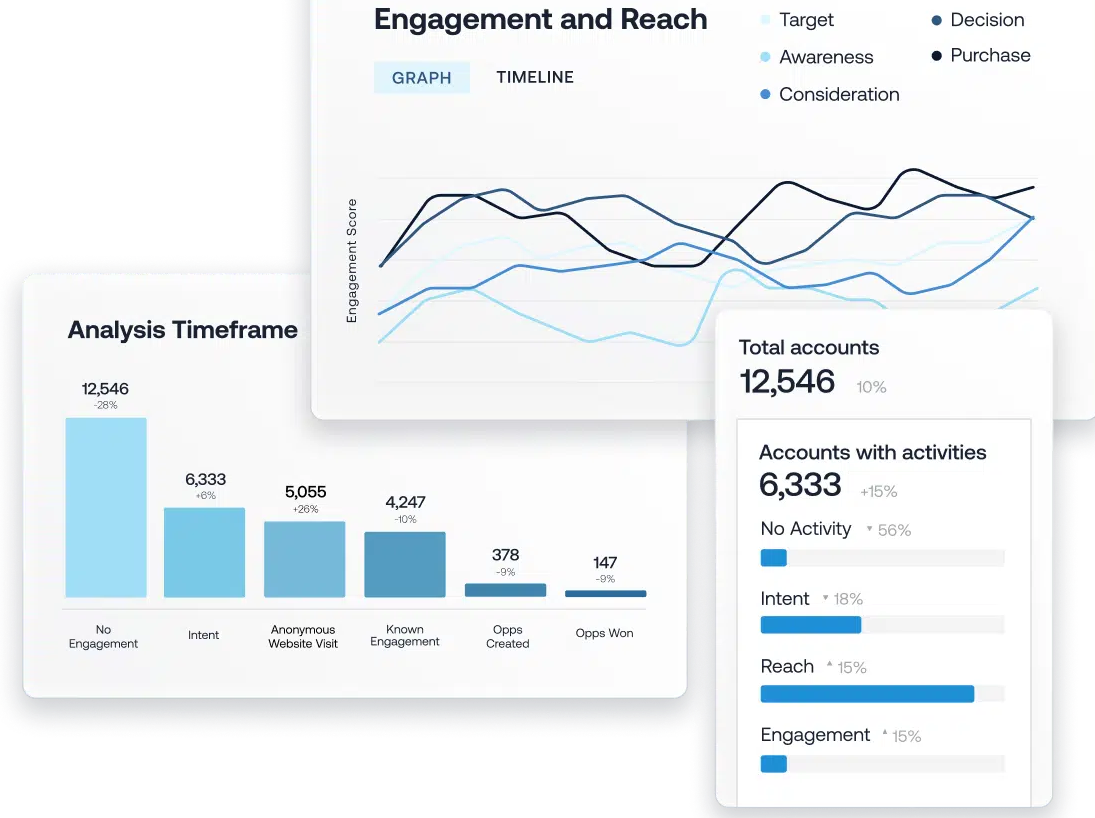 Identifies which companies are showing interest using firmographic and web activity data. This can help inform early-stage targeting, but does not reflect actual customer actions, such as calls or conversions.
Identifies which companies are showing interest using firmographic and web activity data. This can help inform early-stage targeting, but does not reflect actual customer actions, such as calls or conversions.
2. Multi-Channel Ad Activation
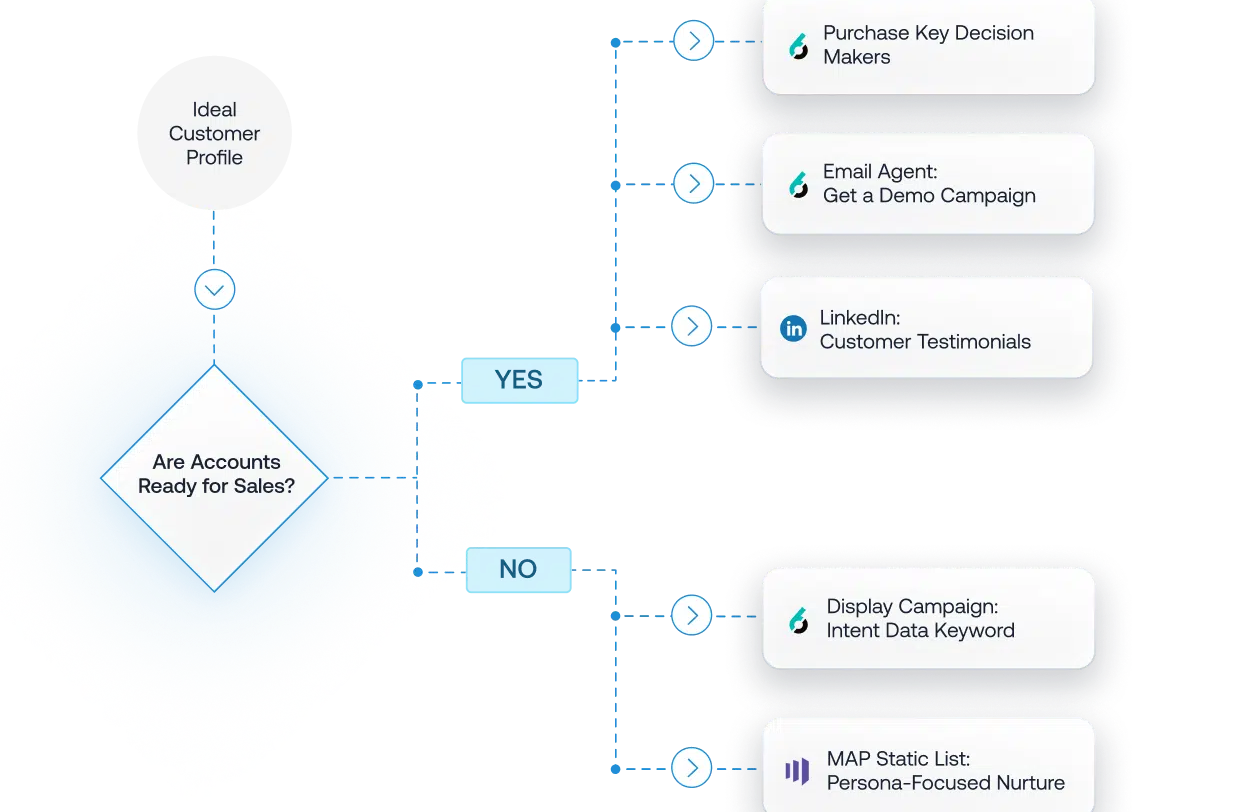 Runs display and social ads across account lists created by the user. While this supports awareness goals, it does not include lead-level attribution or track inbound responses.
Runs display and social ads across account lists created by the user. While this supports awareness goals, it does not include lead-level attribution or track inbound responses.
3. Email Engagement Sync
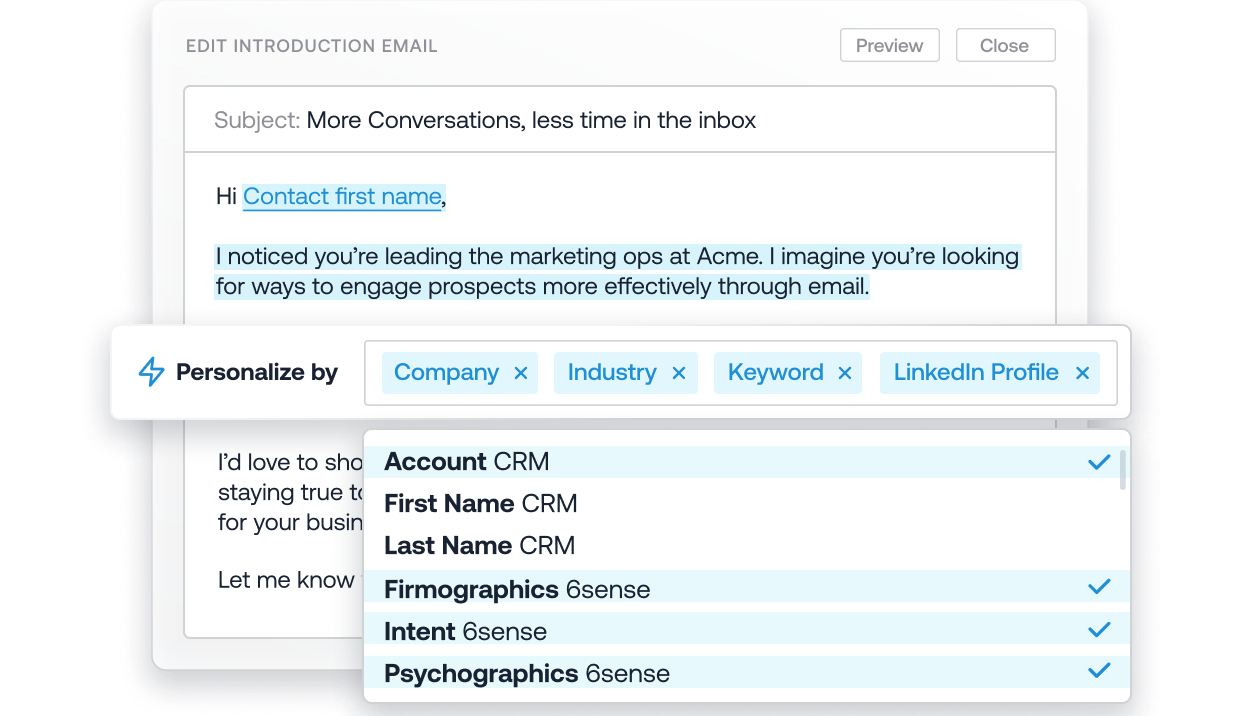 Connects ad activity with email campaigns through CRM integrations. This allows for some message alignment but lacks features such as call tracking, conversation tagging, or IVR routing.
Connects ad activity with email campaigns through CRM integrations. This allows for some message alignment but lacks features such as call tracking, conversation tagging, or IVR routing.
Pros
- Useful for broad B2B audience targeting
- Compatible with major CRM platforms
- Supports general brand visibility across channels
Cons
- No phone call attribution or routing
- No offline tracking or IVR support
- Modeled data may lack absolute lead accuracy
- Less useful for service businesses or inbound call campaigns
Pricing
Pricing details are provided upon request and vary depending on team size and advertising needs.
Final Verdict
6sense works well for top-of-funnel campaigns and teams focused on account-based targeting, but it lacks tools for tracking direct lead behavior. Without phone attribution, call outcomes, or voice-based analytics, it may not be ideal for managing outcome-focused advertising campaigns.
Marketers needing campaign clarity, source-level visibility, and tracked conversions may need to find more practical options.
2. AdRoll
 AdRoll is an advertising management tool specifically designed for e-commerce and small to mid-sized businesses. It offers audience targeting, display, and social ad placement, as well as campaign performance monitoring.
AdRoll is an advertising management tool specifically designed for e-commerce and small to mid-sized businesses. It offers audience targeting, display, and social ad placement, as well as campaign performance monitoring.
AdRoll offers conversion tracking via pixels; however, it does not provide features such as phone call tracking, advanced AI-powered transcription, or full-funnel attribution tools, which are essential for companies relying on direct call outcomes.
Features
- Pixel-based conversion tracking
- Dynamic display ads
- Social media ad bundling
- Ad placements across multiple platforms
- Basic ad scheduling
- Email ad retargeting
- CRM integration
- Pre-built ad templates
- Ad budget controls
- Performance dashboards
Top 3 Features
1. Pixel Conversion Tracking
Uses tracking pixels to record on-site conversions after ad clicks. This method is effective for form submissions and sales, but does not apply to offline or phone-based conversions.
2. Dynamic Display Ads
 Automatically adjusts ad visuals and messaging based on web activity. This supports higher ad relevance but does not include call-based lead handling or voice analytics.
Automatically adjusts ad visuals and messaging based on web activity. This supports higher ad relevance but does not include call-based lead handling or voice analytics.
3. Ad Performance Analytics
 Tracks campaign engagement through clicks and on-site behavior. Reporting is limited to pixel-based events and does not include phone attribution or conversation-level tracking.
Tracks campaign engagement through clicks and on-site behavior. Reporting is limited to pixel-based events and does not include phone attribution or conversation-level tracking.
Pros
- Easy pixel setup
- Ideal for e-commerce ad needs
- Unified display and social ads
Cons
- No support for phone call tracking or routing
- Limited offline conversion visibility
- Not designed for service-based lead capture
- No voice analytics or call logs
- Budget pacing can miss high-intent leads
Pricing
AdRoll offers two pricing plans:
- Pay as you go
- Advanced package
Contact their customer support for further details.
Final Verdict
AdRoll serves e-commerce teams well, focusing on online conversions and advertising campaigns driven by pixels or sales. It lacks essential voice-based features, such as call tracking and transcription, making it less suitable for businesses that rely on phone leads or full-funnel analysis. If ad campaigns involve call-based conversions, a tool with end-to-end tracking delivers more actionable insights.
3. Asana
 Asana is a campaign planning and project management platform used by marketing teams to organize tasks, timelines, and creative workflows.
Asana is a campaign planning and project management platform used by marketing teams to organize tasks, timelines, and creative workflows.
Asana facilitates task assignment and keeps deliverables on track through shared timelines and team dashboards. However, it is not specifically designed for tracking phone leads, reviewing call outcomes, or connecting campaign performance to direct customer actions.
Features
- Task management
- Project timelines
- Team collaboration
- Dashboards
- Deadline reminders
- Task dependencies
- File attachments
- Comment threads
- Basic reporting
- Mobile alerts
Top 3 Features
1. Task Management
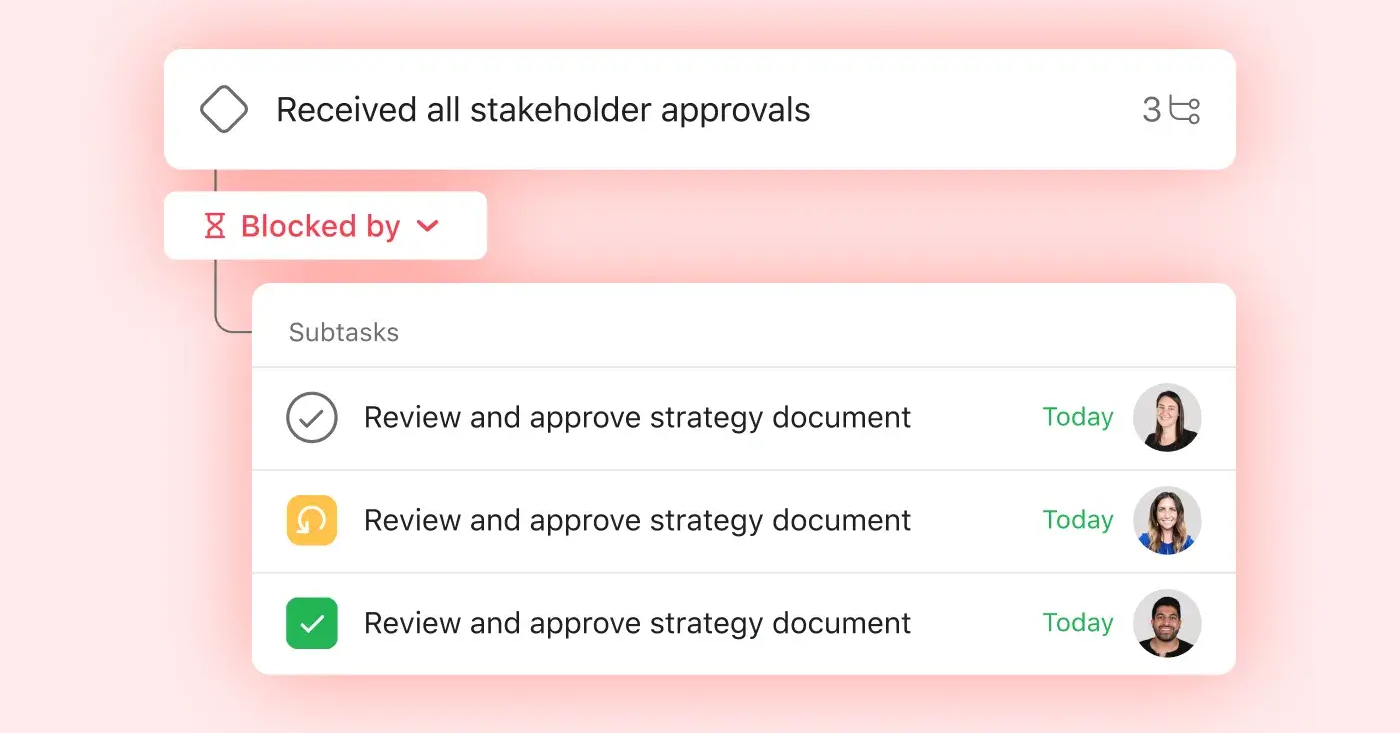 Allows users to assign, track, and prioritize tasks within marketing campaigns, keeping teams aligned, but it does not record campaign outcomes or link tasks to customer interactions.
Allows users to assign, track, and prioritize tasks within marketing campaigns, keeping teams aligned, but it does not record campaign outcomes or link tasks to customer interactions.
2. Project Timelines
 Provides visual timelines to map out deliverables and ad flight schedules, helping with planning but not monitoring lead activity or conversion data.
Provides visual timelines to map out deliverables and ad flight schedules, helping with planning but not monitoring lead activity or conversion data.
3. Team Collaboration
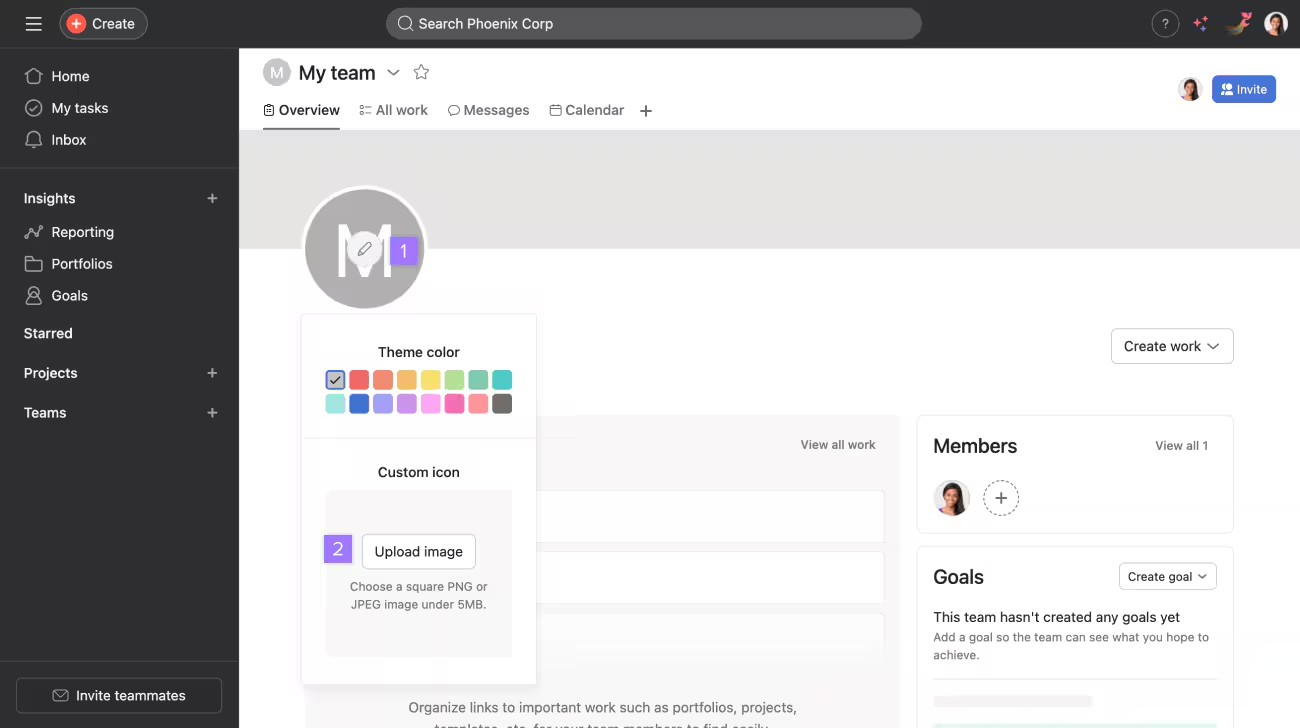 Supports in-app comments, approvals, and file sharing to streamline team workflows; however, it does not offer integration with call tracking or attribution tools.
Supports in-app comments, approvals, and file sharing to streamline team workflows; however, it does not offer integration with call tracking or attribution tools.
Pros
- Organizes marketing tasks efficiently
- Keeps creative workflows on schedule
- Offers basic project visibility
Cons
- Not designed for capturing campaign leads
- No phone call tracking or analytics
- Lacks integration with call routing systems
- Not built for ad spend or conversion reporting
Pricing
Asana offers 4 pricing plans:
- Personal: US$0
- Starter: US$10.99
- Advanced: US$24.99
- Enterprise: Contact sales
Final Verdict
Asana works well for keeping teams aligned on schedules, approvals, and creative assets. But when campaigns rely on inbound calls, ad-level attribution, or tracked outcomes, Asana’s role becomes limited. Businesses that need visibility into how leads are generated or routed will require more than task lists and calendar views to measure results.
4. Celtra
 Celtra is a design-centric ad creative management platform used by brands and agencies to build, preview, and deploy digital ads across display and social channels.
Celtra is a design-centric ad creative management platform used by brands and agencies to build, preview, and deploy digital ads across display and social channels.
The platform streamlines creative workflows by facilitating asset collaboration and ensuring creative compliance. While it improves production speed, Celtra does not include features for campaign planning, call tracking, or performance reporting based on lead outcomes.
Features
- Creative asset collaboration
- Template-based ad design
- Cross-channel creative previews
- Version control
- Approval workflows
- Team user roles
- Export for ad platforms
- Compliance checks
Top 3 Features
1. Template-Based Ad Design
 Provides drag-and-drop templates for digital ads across display and social media channels. It helps speed up creative production, though it does not connect ads to tracked campaigns or voice-based conversions.
Provides drag-and-drop templates for digital ads across display and social media channels. It helps speed up creative production, though it does not connect ads to tracked campaigns or voice-based conversions.
2. Multi-Format Creative Resizing
 Resizes creative files for various formats and placements. Helps maintain visual consistency, but does not tie formats to campaign results or ad spend performance.
Resizes creative files for various formats and placements. Helps maintain visual consistency, but does not tie formats to campaign results or ad spend performance.
3. Creative Asset Collaboration
 Allows teams to share, comment on, and approve creatives within a single workspace. This keeps design work organized but does not include performance monitoring or integration with CRM systems.
Allows teams to share, comment on, and approve creatives within a single workspace. This keeps design work organized but does not include performance monitoring or integration with CRM systems.
Pros
- Speeds up creative production
- Supports team-based design oversight
- Ensures creative consistency
Cons
- Doesn’t have call tracking or routing features
- Lacks campaign-level attribution
- Not built for lead conversion tracking
- No voice analytics feature
Pricing
Celtra’s pricing varies depending on the number of user seats and the volume of creative work. Detailed information is available upon request.
Final Verdict
Celtra is designed for creative teams working on display or social ads, enhancing production workflows and ensuring consistent visual output across all channels. However, for marketers who need to connect campaign visuals to real leads, especially those generated via phone calls, it lacks essential tools such as call tracking, attribution, and voice-based analytics.
Businesses focused on conversion-driven campaigns will require a system that bridges creative execution and lead outcomes.
5. Google Ad Manager
 Google Ad Manager supports advertisers and publishers running advertising campaigns across websites, video content, and mobile apps. The platform helps manage ad formats, placements, and audience targeting within Google’s ecosystem.
Google Ad Manager supports advertisers and publishers running advertising campaigns across websites, video content, and mobile apps. The platform helps manage ad formats, placements, and audience targeting within Google’s ecosystem.
The tool offers features for delivery and inventory management. Still, it does not extend into CRM-powered targeting, call-based attribution, or outcome-focused reporting tools, which are often required for full-funnel visibility.
Features
- Ad slot scheduling
- Multiple ad formats
- Yield management control
- Page-level ad delivery control
- Audience filtering
- Ad campaign trafficking
- Mobile inventory support
- General campaign data tools
- Impression pacing
Top 3 Features
1. Multiple Ad Formats
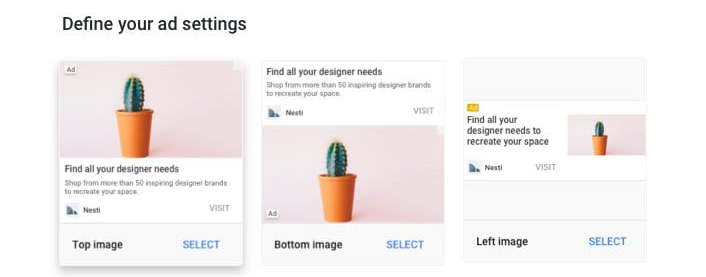 Supports display, video, native, and mobile ad formats across Google’s ad network. This helps improve visibility but does not offer tools to track ads.
Supports display, video, native, and mobile ad formats across Google’s ad network. This helps improve visibility but does not offer tools to track ads.
2. Yield Management Controls
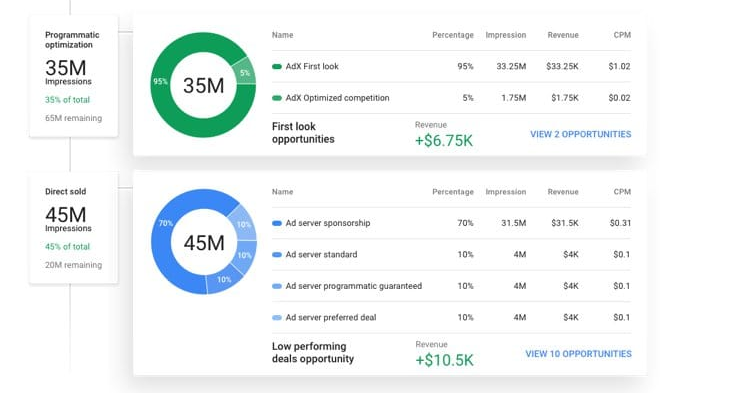 Includes pacing, pricing rules, and delivery optimization for digital inventory. While helpful in maximizing impressions, it does not support routing, call transcription, or CRM-based engagement tracking.
Includes pacing, pricing rules, and delivery optimization for digital inventory. While helpful in maximizing impressions, it does not support routing, call transcription, or CRM-based engagement tracking.
3. Basic Campaign Data Tools
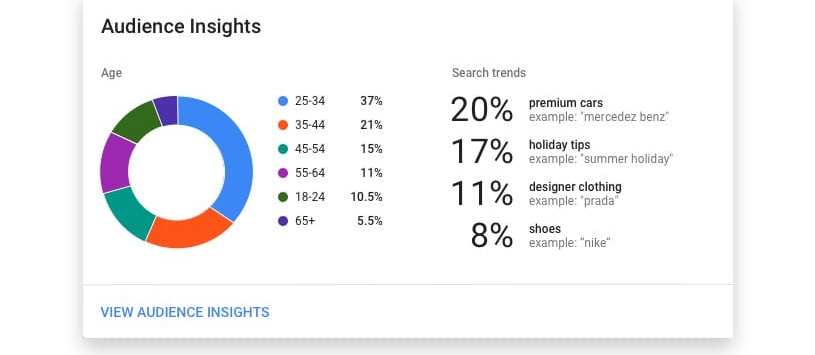 Provides general reporting dashboards to monitor impression delivery and pacing. These tools focus on ad delivery health but do not connect to attribution tools or voice-based campaign performance metrics.
Provides general reporting dashboards to monitor impression delivery and pacing. These tools focus on ad delivery health but do not connect to attribution tools or voice-based campaign performance metrics.
Pros
- Reliable ad slot control
- Proper display and video coverage
Cons
- Lacks voice analytics and transcription tools
- No integration with lead tracking or CRM platforms
- Reporting limited to delivery metrics, not conversion behavior
Pricing
Google Ad Manager uses a usage-based pricing structure tied to inventory volume and platform access. Specific pricing is not publicly listed and must be requested from Google.
Final Verdict
Google Ad Manager is designed for teams that prioritize digital ad delivery, inventory setup, and platform control across Google properties. However, for advertisers seeking to integrate ad platforms with inbound lead behavior, phone calls, or conversion-level reporting, it leaves critical gaps.
Campaigns that rely on customer interaction, offline actions, or CRM systems may require tools designed for deeper visibility into performance.
6. Hootsuite
 Hootsuite is a social media management platform that helps teams plan, run, and view both paid and organic campaign activity in one unified calendar.
Hootsuite is a social media management platform that helps teams plan, run, and view both paid and organic campaign activity in one unified calendar.
Hootsuite streamlines social campaign planning, boosts, and monitoring across platforms, offering clear visibility into performance metrics for Facebook, Instagram, X, and LinkedIn campaigns. However, it does not provide phone call attribution, voice analytics, or submission routing, which can limit visibility when success depends on inbound financial inquiries or direct customer calls.
Features
- Content scheduling
- Social media and ad monitoring
- Boosts for organic posts
- Ad account linking and permission controls
- Campaign viewing in calendar
- Post and ad approval workflows
- Basic engagement analytics
- Bulk uploads
- Brand mention tracking
- URL tracking integration
- Mobile app support
Top 3 Features
1. Social & Paid Campaign Calendar
 Allows teams to view both organic and paid social campaigns in a monthly or weekly calendar, helping plan posting cadence and ad boosts. It aids in cross-channel scheduling but does not connect activity to phone leads or call metrics.
Allows teams to view both organic and paid social campaigns in a monthly or weekly calendar, helping plan posting cadence and ad boosts. It aids in cross-channel scheduling but does not connect activity to phone leads or call metrics.
2. Social Monitoring
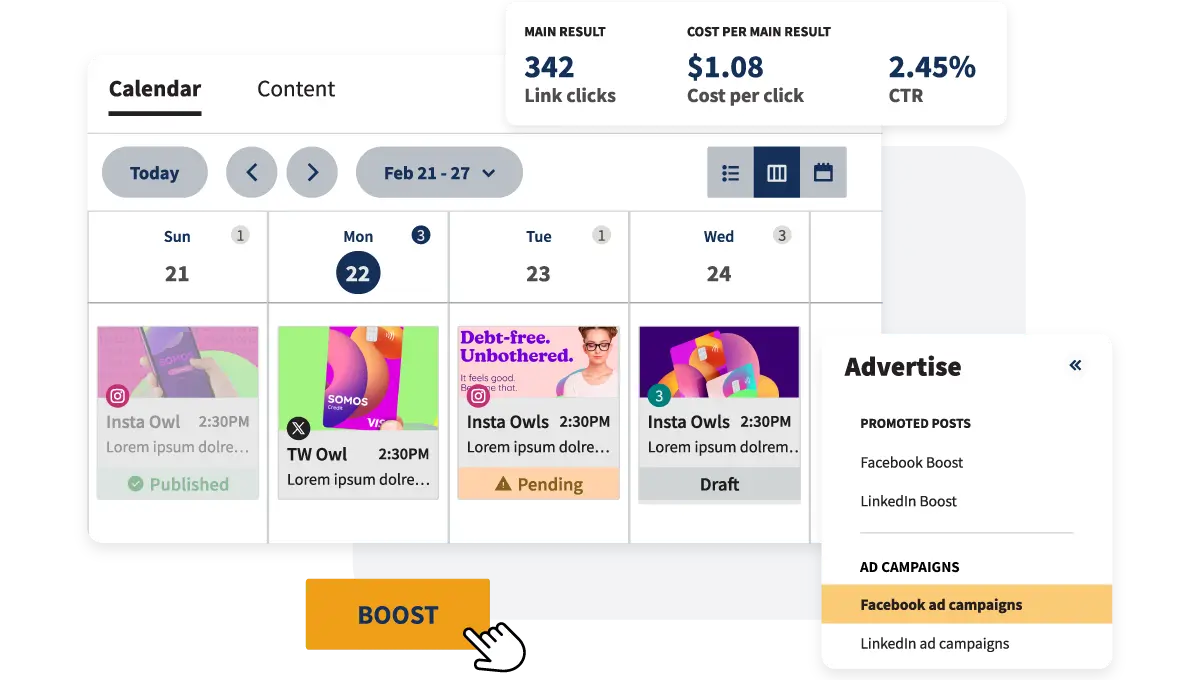 Tracks brand mentions and keywords across social platforms. Useful for engagement tracking, but it is not tied to campaign performance via phone or CRM systems.
Tracks brand mentions and keywords across social platforms. Useful for engagement tracking, but it is not tied to campaign performance via phone or CRM systems.
3. Bulk Upload Tools
 Allows uploading large lists of posts and media at once, saving time for content-heavy workflows. It speeds production but has no link to lead-level reporting or call attribution.
Allows uploading large lists of posts and media at once, saving time for content-heavy workflows. It speeds production but has no link to lead-level reporting or call attribution.
Pros
- Unified social and paid content calendar
- Quick campaign boosts for organic posts
- Bulk upload for content-heavy schedules
Cons
- No call-level visibility or routing
- Lacks voice-based interaction data
- Does not support ad-to-call attribution
- No CRM or CRM-targeted call tracking
Pricing
Hootsuite offers tiered plans, mentioned as follows:
- Standard: $99 per user/mo*
- Advanced: $249 per user/mo*
- Enterprise Suite: Custom pricing
Final Verdict
Hootsuite offers convenience for managing social media advertising campaigns, letting teams publish and review both organic and paid content in one place. It adds clarity to social media performance, but it lacks tools for call-driven strategy, such as call attribution, voice tagging, or CRM sync with phone leads.
Campaigns that rely on a mix of digital and voice-based engagement, pairing social scheduling with a call-tracking solution, provide more complete campaign visibility.
7. HubSpot
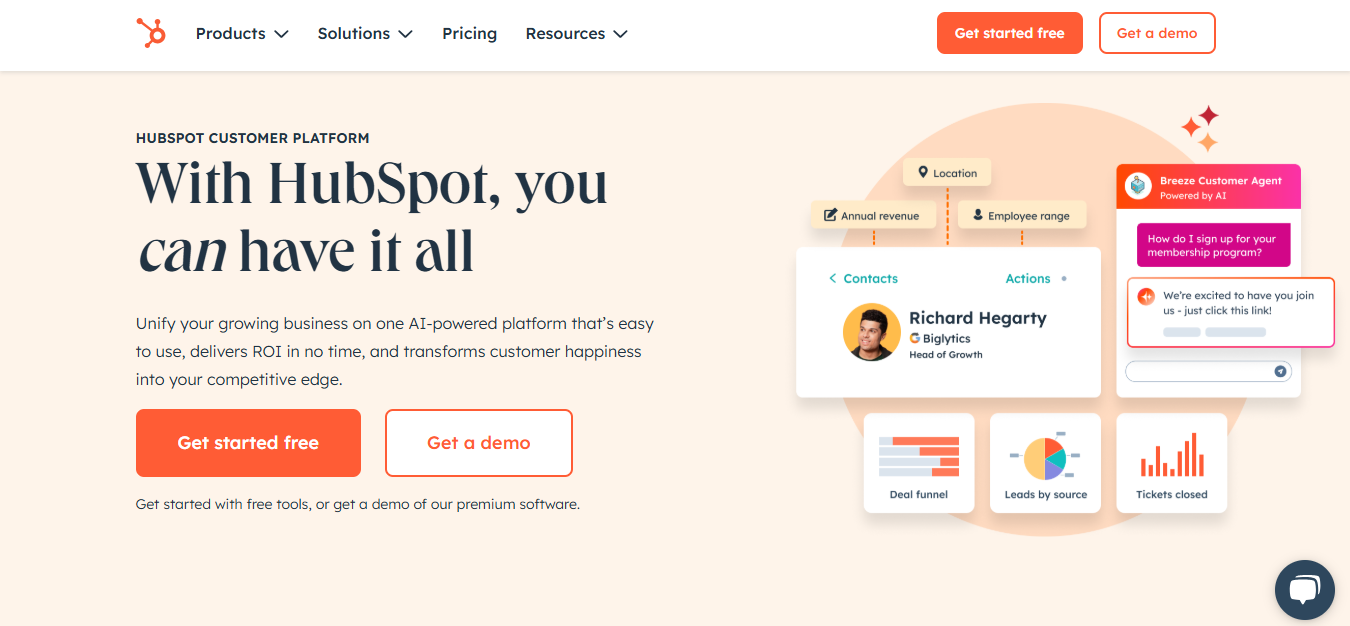 HubSpot is a marketing, sales, and CRM platform providing a simple approach to managing digital campaigns. It supports social media posts, contact-based advertising, and lead syncing, making it suitable for teams handling web-first engagement. However, it lacks tools for measuring inbound calls, tagging phone leads, or routing calls; features often required in full-funnel campaign planning.
HubSpot is a marketing, sales, and CRM platform providing a simple approach to managing digital campaigns. It supports social media posts, contact-based advertising, and lead syncing, making it suitable for teams handling web-first engagement. However, it lacks tools for measuring inbound calls, tagging phone leads, or routing calls; features often required in full-funnel campaign planning.
Features
- CRM-powered lead tracking
- Email campaign management
- Social media post scheduling
- Ad performance tracking
- Contact scoring
- Marketing dashboards
- Form tracking
- CRM workflows
- Basic attribution reports
Top 3 Features
1. CRM-Powered Lead Tracking
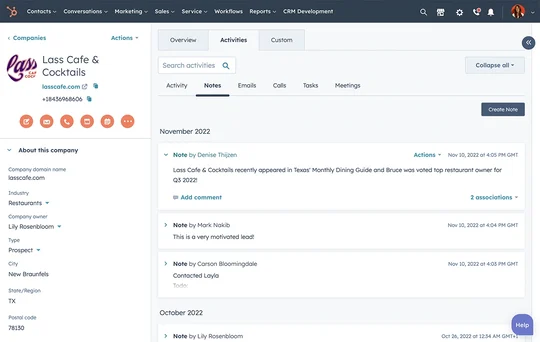 Syncs marketing touchpoints, such as email, ads, and forms, into a shared contact database, helping to align campaign activity. But it stops short of linking to voice calls or phone-based conversion events.
Syncs marketing touchpoints, such as email, ads, and forms, into a shared contact database, helping to align campaign activity. But it stops short of linking to voice calls or phone-based conversion events.
2. Ad Performance Tracking
 Monitors clicks, impressions, and leads generated from ads across channels. While useful for measuring ad spend, it does not include data from inbound calls or outcomes tied to phone engagement.
Monitors clicks, impressions, and leads generated from ads across channels. While useful for measuring ad spend, it does not include data from inbound calls or outcomes tied to phone engagement.
3. Basic Attribution Reporting
 Offers multi-touch attribution models for email, form, and ad conversions. It gives a segmented view of online tactics but does not incorporate call outcomes, voice tagging, or call-level analytics.
Offers multi-touch attribution models for email, form, and ad conversions. It gives a segmented view of online tactics but does not incorporate call outcomes, voice tagging, or call-level analytics.
Pros
- Integrates ads with CRM records
- Offers email and social campaign alignment
- Includes contact-based reporting
Cons
- Lacks voice transcription for call data
- Lacks direct call routing or tagging
- Doesn’t provide phone conversion tracking
- Not built for call-centric lead measurement
Pricing
HubSpot offers the following pricing plans:
- Professional: Starts at US$800/mo
- Enterprise: Starts at US$3,600/mo
Final Verdict
HubSpot covers the basics of digital lead generation, email nurturing, and ad tracking within a centralized CRM. It offers value around managing marketing campaigns, but it does not extend to phone-based lead capture, call routing, or voice analytics.
Businesses that rely on inbound calls as a conversion path, pairing HubSpot with a dedicated tool that tracks call interactions, are essential to gain complete visibility into campaign ROI.
8. RollWorks
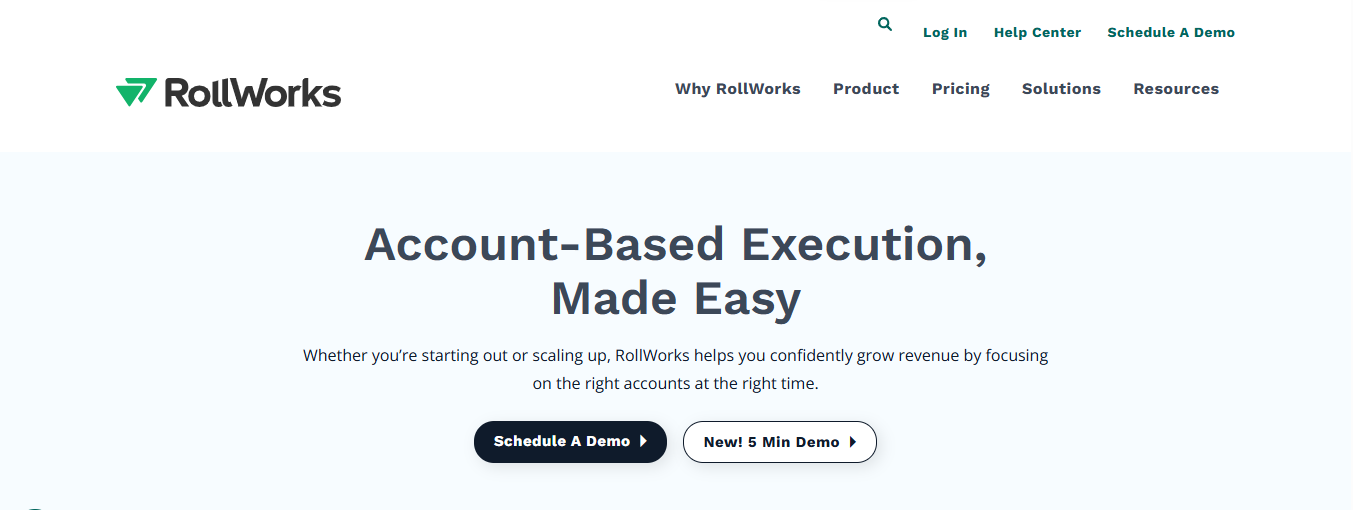 RollWorks positions itself as an account-based marketing platform for B2B teams running account-based marketing strategies. It supports audience targeting, ad planning, and campaign performance tracking at the account level.
RollWorks positions itself as an account-based marketing platform for B2B teams running account-based marketing strategies. It supports audience targeting, ad planning, and campaign performance tracking at the account level.
The platform does offer helpful features for brand visibility and long-term engagement, but it lacks tools for tracking phone-based leads, analyzing call outcomes, or managing voice interactions, which limits its utility for campaigns involving direct customer conversations or call-based conversions.
Features
- Account-based audience targeting
- CRM integration
- Intent data signals
- Multi-channel ad campaigns
- Campaign performance dashboards
- Contact list syncing
- Website visitor tracking
- Sequential ad sequencing
- Budget pacing controls
- Ad platform connectors
Top 3 Features
1. Account-Based Audience Targeting
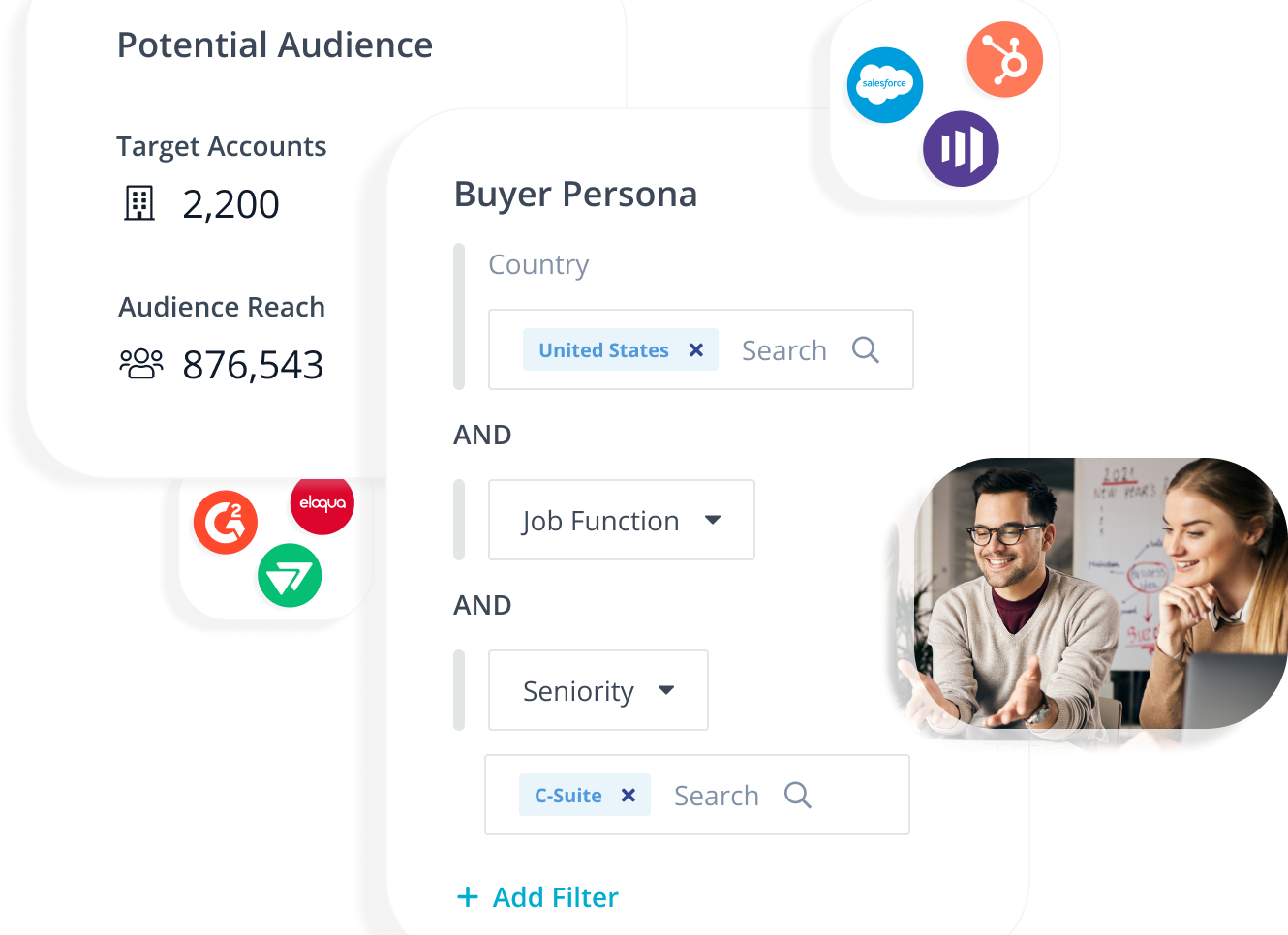 Allows teams to define high-value company segments and target ads specifically to them. This helps align messages with account strategy but does not measure which campaigns drove calls or individual buyer responses.
Allows teams to define high-value company segments and target ads specifically to them. This helps align messages with account strategy but does not measure which campaigns drove calls or individual buyer responses.
2. Website Visitor Identification
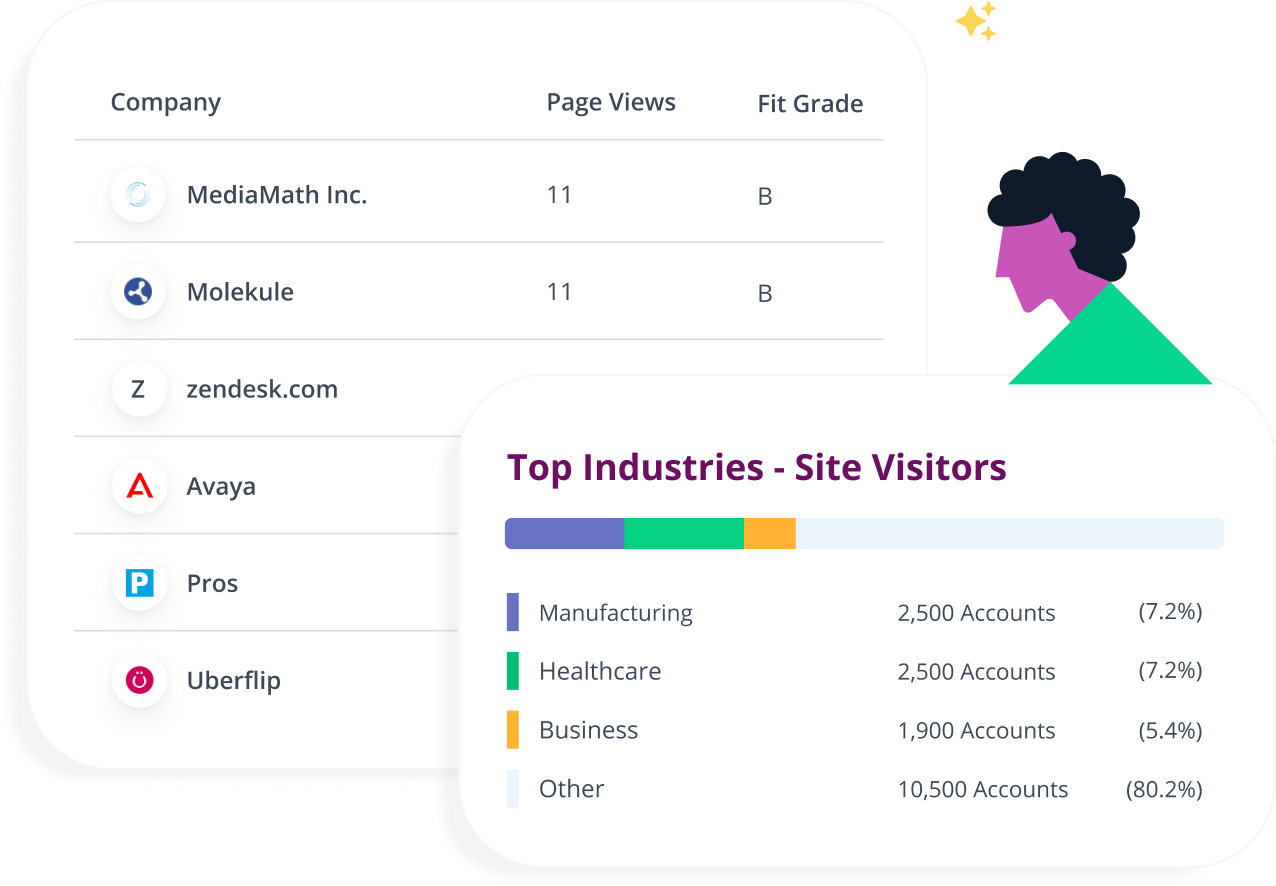 RollWorks identifies anonymous website visitors, maps them to company profiles, and surfaces those most likely to convert based on engagement behavior.
RollWorks identifies anonymous website visitors, maps them to company profiles, and surfaces those most likely to convert based on engagement behavior.
3. Multi‑Channel Ad Campaigns
Helps with simultaneous ad deployment across display, social, and search platforms. It supports campaign performance visibility at an account level but stops short of linking ads to phone-based outcomes or call analytics.
Pros
- ABM-focused ad delivery
- Proper account sync with CRM
- Adds insight on account interest
Cons
- Cannot route inbound calls
- No call-level visibility
- Lacks call-based conversion tracking
- Ad-level attribution misses call data
Pricing
RollWorks pricing is customized by account size and feature level. Its specifics are available on request.
Final Verdict
RollWorks serves B2B marketers looking to segment accounts, sync CRM data, and plan multi-channel advertising campaigns. However, the absence of call attribution, call tracking, and lead-level interaction data makes it less practical for campaigns that require measurable customer conversations. For ad strategies where inbound calls play a significant role, a more conversion-focused and phone-aware solution is recommended.
9. XtremeReach
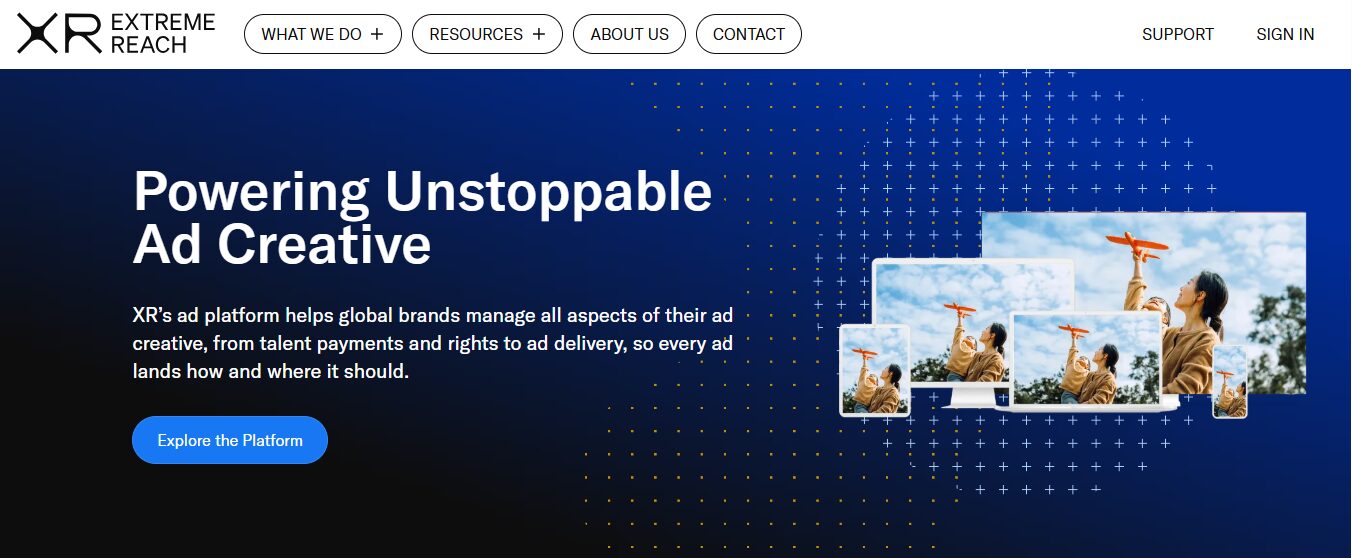 XtremeReach is an ad campaign management platform designed for large-scale video advertising, including linear TV, connected TV, and digital video. While it is good at scheduling and delivering ads across broadcast mediums, it lacks support phone call tracking, AI-powered transcription, or call attribution, features essential for businesses that rely on inbound leads and measurable campaign ROI.
XtremeReach is an ad campaign management platform designed for large-scale video advertising, including linear TV, connected TV, and digital video. While it is good at scheduling and delivering ads across broadcast mediums, it lacks support phone call tracking, AI-powered transcription, or call attribution, features essential for businesses that rely on inbound leads and measurable campaign ROI.
Features
- Linear TV media planning
- Connected TV scheduling
- Digital video ad delivery
- Budget allocation tools
- Ad platform syncing
- Campaign flight monitoring
- Reporting dashboards
- Predefined media templates
- Geo-targeted spot placement
- Ad spend tracking
Top 3 Features
1. TV & CTV Media Planning
 Lets teams manage ad schedules for traditional and streaming television. This works well for broadcast campaigns, but is not designed to connect ads to specific lead conversions.
Lets teams manage ad schedules for traditional and streaming television. This works well for broadcast campaigns, but is not designed to connect ads to specific lead conversions.
2. Budget Allocation Tools
 Helps distribute ad budgets across TV, CTV, and digital spots. These tools aid in spend control, but do not link media buys to call-based outcomes.
Helps distribute ad budgets across TV, CTV, and digital spots. These tools aid in spend control, but do not link media buys to call-based outcomes.
3. Campaign Flight Monitoring
Confirms that ads aired at scheduled times and platforms. This provides delivery assurance, but does not measure engagement or call-driven results.
Pros
- Handles high-volume video ad scheduling
- Syncs TV and digital ad delivery
- Offers basic budgeting capabilities
Cons
- No call tracking, routing, tagging, or transcription
- Lacks offline or voice attribution
- Limited to video campaign oversight
- Not built for inbound lead generation
Pricing
Pricing details for XtremeReach are available upon request and vary based on campaign volume, ad formats, and geographic scope.
Final Verdict
XtremeReach is designed for agencies managing large-scale TV and CTV campaigns, particularly when media coordination is the primary objective. However, it lacks the critical tools necessary to connect ads to phone leads, such as call tracking, transcription, and inbound attribution. For businesses that rely on direct customer calls, a platform with end-to-end lead visibility and call-level analytics is essential.
10. AdEspresso
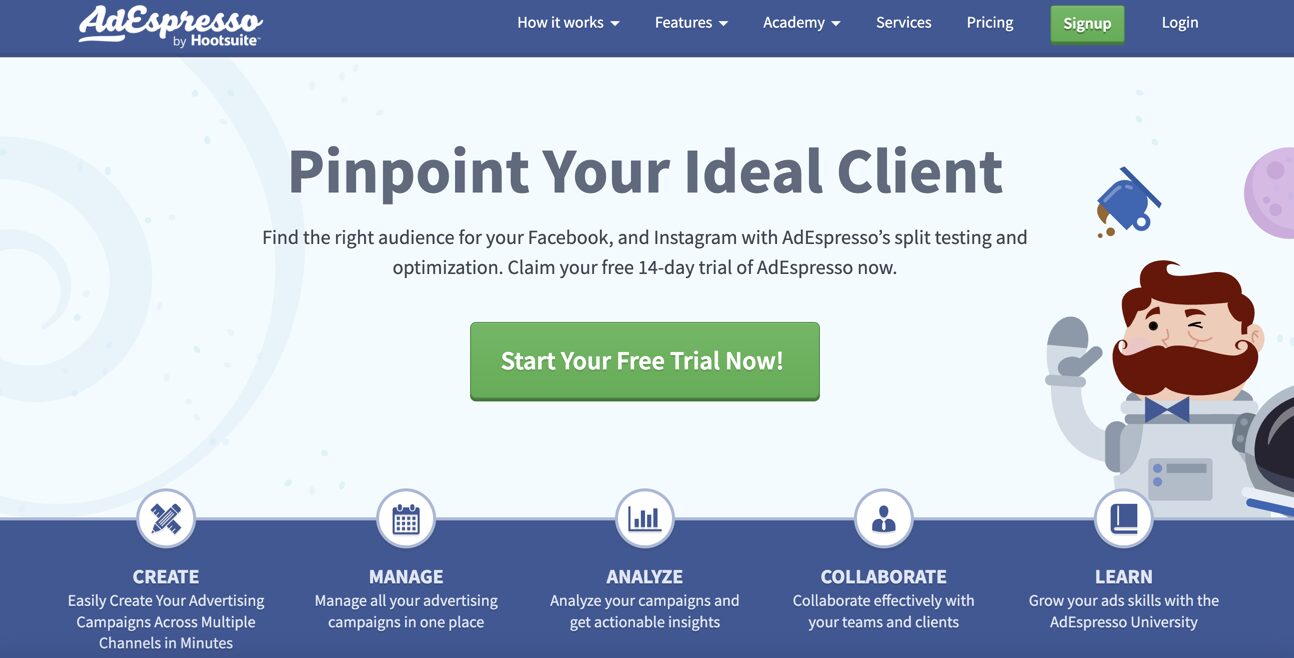 AdEspresso is a user-friendly ad management platform that focuses on simplifying campaign optimization, especially for Facebook, Instagram, and Google Ads. It offers tools for ad creation, A/B testing, and multi-platform campaign management, making it ideal for small to medium-sized businesses looking to maximize their ad spend.
AdEspresso is a user-friendly ad management platform that focuses on simplifying campaign optimization, especially for Facebook, Instagram, and Google Ads. It offers tools for ad creation, A/B testing, and multi-platform campaign management, making it ideal for small to medium-sized businesses looking to maximize their ad spend.
Features
- Facebook, Instagram, and Google Ads campaign management
- A/B testing for ad creatives
- Multi-platform ad creation
- Performance tracking and reporting
- Ad optimization suggestions
- Audience targeting and segmentation
- Customizable reporting dashboards
- Budget management and pacing
- Collaboration tools for teams
- Simple integration with Facebook Ads Manager and Google Ads
Top 3 Features
1. Multi-Platform Campaign Management
 AdEspresso makes it easy to manage and optimize campaigns across multiple platforms such as Facebook, Instagram, and Google Ads. This feature streamlines the process of running ads on different networks but lacks phone call tracking or integration with CRM systems to tie conversions to offline activities.
AdEspresso makes it easy to manage and optimize campaigns across multiple platforms such as Facebook, Instagram, and Google Ads. This feature streamlines the process of running ads on different networks but lacks phone call tracking or integration with CRM systems to tie conversions to offline activities.
2. A/B Testing for Ads
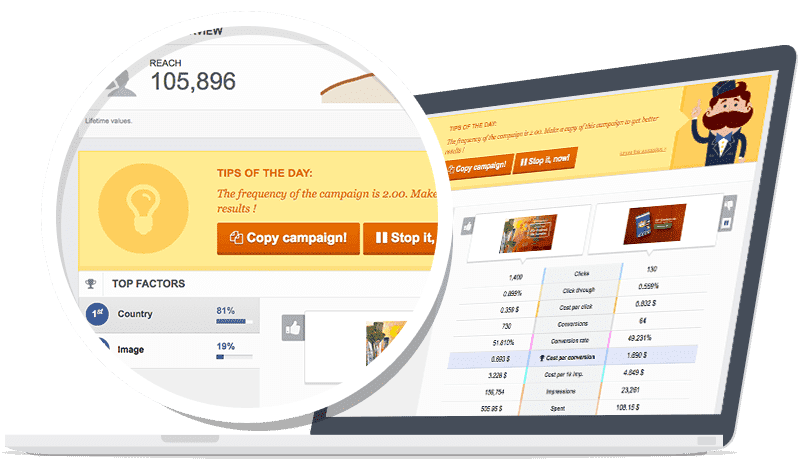 AdEspresso offers extensive tools for A/B testing, allowing marketers to experiment with multiple versions of their ads to find the most effective creatives. However, it does not offer insights into how phone-based or offline conversions contribute to ad performance.
AdEspresso offers extensive tools for A/B testing, allowing marketers to experiment with multiple versions of their ads to find the most effective creatives. However, it does not offer insights into how phone-based or offline conversions contribute to ad performance.
3. Performance Reporting and Optimization
 AdEspresso’s intuitive dashboard shows detailed campaign performance reports, helping marketers identify areas for improvement and optimize their ads. While it provides actionable insights for digital ads, it lacks features for tracking call outcomes or lead attribution based on phone interactions.
AdEspresso’s intuitive dashboard shows detailed campaign performance reports, helping marketers identify areas for improvement and optimize their ads. While it provides actionable insights for digital ads, it lacks features for tracking call outcomes or lead attribution based on phone interactions.
Pros
- Easy management of multiple platforms (Facebook, Instagram, Google Ads)
- Comprehensive A/B testing for ad creatives
- User-friendly interface with customizable reporting
- Data-driven ad optimization suggestions
- Seamless integration with Facebook Ads Manager and Google Ads
Cons
- No call tracking or voice attribution
- Lacks CRM system integration for offline conversions
- Does not support phone lead attribution
- Limited insights into call outcomes and offline actions
- Not suitable for call-driven campaigns
Pricing
AdEspresso offers several pricing tiers based on ad spend and team size:
- Starter: $49/month (up to $10,000 in ad spend)
- Plus: $99/month (up to $25,000 in ad spend)
- Enterprise: Custom pricing for larger businesses
Final Verdict
AdEspresso simplifies multi-platform management and offers deep insights into digital ad performance. However, for businesses that rely on phone conversions, call routing, or lead-level attribution, AdEspresso may not provide the full visibility needed to measure and optimize campaign success. For more comprehensive tracking that includes both digital and offline lead interactions, additional solutions are necessary.
Why AvidTrak is the Best Choice for Advertising Management Tools When Call Tracking is Essential
While advertising management tools offer various capabilities like audience targeting, ad scheduling, and performance reporting, many of them lack critical features when it comes to tracking phone-based conversions. This is where AvidTrak stands out.
AvidTrak offers call tracking, AI-powered transcription, and campaign-level attribution tools to identify which marketing tactic triggered each call. Businesses can view detailed ad campaign reporting, tag conversations, and sync leads to CRM systems for better follow-up and visibility.
AvidTrak also supports advanced call routing, voicemail, and caller tagging to reduce missed opportunities. For businesses managing inbound calls across locations or time zones, these tools help maintain control at every step.
What sets AvidTrak apart is its combination of low-cost pricing, responsive customer service, and years of experience solving complex advertising tech setup challenges. Whether tracking clicks, forms, or calls, AvidTrak simplifies campaign planning without adding complexity.
1. AI-Powered Call Transcription
 AvidTrak uses AI technology to transcribe phone conversations into searchable text, incorporating keyword tags that facilitate the identification of caller intent. Teams can flag keywords tied to intent, making it easier to analyze caller behavior, tag outcomes, and refine advertising campaigns based on real conversations.
AvidTrak uses AI technology to transcribe phone conversations into searchable text, incorporating keyword tags that facilitate the identification of caller intent. Teams can flag keywords tied to intent, making it easier to analyze caller behavior, tag outcomes, and refine advertising campaigns based on real conversations.
2. Multi-Level Advanced Call Routing
 AvidTrak allows calls to be routed by zip code, caller ID, or IVR selections. This improves audience targeting, supports multi-location businesses, and prevents missed opportunities during peak call times.
AvidTrak allows calls to be routed by zip code, caller ID, or IVR selections. This improves audience targeting, supports multi-location businesses, and prevents missed opportunities during peak call times.
3. Conversion Source Tracking
 AvidTrak ties each call to the specific ad platform, keyword, or campaign that triggered it. This feature provides full-funnel visibility through attribution tools, helping teams to measure campaign performance and optimize ad spend with greater accuracy.
AvidTrak ties each call to the specific ad platform, keyword, or campaign that triggered it. This feature provides full-funnel visibility through attribution tools, helping teams to measure campaign performance and optimize ad spend with greater accuracy.
Pros
- Transparent, affordable pricing for call tracking with no hidden fees
- Quick setup with a clean, user-friendly interface
- Helps optimize campaigns to increase conversions
- Offers simple, low-cost tracking, recording, and marketing attribution
- No obligation 14-day free trial with $20 credit, inclusive of all features
- Excellent customer support and instant response times
- Advanced customization options available without additional charges
- Seamless integration with major CRM systems
Cons
- No GHL integration
Pricing
AvidTrak offers 3 pricing plans, mentioned below:
- Starter: $15/month
- Professional: $30/month
- Agency: $55/month
Conclusion
Advertising management tools play a key role in campaign planning, audience targeting, and ad spend visibility. Many platforms support social media scheduling, digital ad formats, and reporting tools, but not all provide clarity when customer engagement happens through phone calls or offline interactions.
AvidTrak fills the gap by offering keyword-level call tracking, call attribution, and CRM-ready call data. Features such as campaign-specific DNI, AI-powered transcription, and custom attribution dashboards help marketers understand what drives actual conversions. With transparent pricing, strong product support, and tools designed for campaign optimization, AvidTrak combines advertising and call tracking into a single platform.
Start your 14-day free trial with AvidTrak and manage your next advertising campaigns with more precision and confidence!
Frequently Asked Questions
1. What are advertising management tools used for?
Advertising management tools help plan, run, and measure campaigns across various platforms, including Google Ads and Meta. They support ad creation, audience targeting, and performance tracking in one place.
2. Can advertising management tools track offline conversions such as phone calls?
Most advertising tools track digital actions only. AvidTrak adds value by linking campaigns to phone calls using dynamic number insertion and call attribution, a capability many tools lack.
3. How does AvidTrak compare to tools like Google Ad Manager or RollWorks?
Platforms such as Google Ad Manager and RollWorks manage ad placement and reach. AvidTrak takes it a step further by tracking inbound leads, scoring calls, and syncing with CRMs to connect ad spend to real outcomes.
4. Is AvidTrak suitable for agencies managing multiple client campaigns?
Yes. AvidTrak supports advertising campaign management with client-level dashboards, white-label reporting, and campaign-specific call tracking, making it ideal for agencies.
5. What type of campaign data does AvidTrak provide?
AvidTrak delivers keyword-level reporting, call duration statistics, and tagged caller intent, providing marketers with detailed data to optimize ad performance across multiple channels.
6. Do all advertising management platforms offer call routing or CRM-ready data?
No. Tools such as Celtra or AdRoll focus on creatives or media buying. AvidTrak stands out by offering call routing, lead syncing, and CRM-ready data for full-funnel visibility.
7. Why is phone tracking important in ad campaigns?
Many conversions happen by phone. AvidTrak helps attribute those calls back to specific campaigns, providing businesses with the visibility often missing in most advertising management platforms.
8. Can AvidTrak track campaign performance across channels?
Yes. AvidTrak links calls, tags, and conversions to search, display, and social ads, making it a complete advertising management tool with built-in call-level attribution.



 Tracks campaign engagement through clicks and on-site behavior. Reporting is limited to pixel-based events and does not include phone attribution or conversation-level tracking.
Tracks campaign engagement through clicks and on-site behavior. Reporting is limited to pixel-based events and does not include phone attribution or conversation-level tracking. Resizes creative files for various formats and placements. Helps maintain visual consistency, but does not tie formats to campaign results or ad spend performance.
Resizes creative files for various formats and placements. Helps maintain visual consistency, but does not tie formats to campaign results or ad spend performance.